A common comment you'll find in our history curriculum reviews is that a particular program isn't sufficient on its own. Which begs the question: how much history instruction is enough? With thousands of years, dozens of empires, seven continents, the Renaissance and Reformation, the Modern Age, and the Postmodern Era, what is essential and what can be left for students to discover on their own?
More importantly, how does one go about teaching all this stuff? History buffs may not have an immediate answer, but they've got one thing the rest of us don't—desire. The appetite for knowledge of the past makes figuring out how to teach it more of a game than anything else. Sure, even Roman Empire geeks get worn out from time to time, but they're just doing what they love.
One of the main goals for parents is to light the fire of curiosity and willingness to discover. Parents and children alike must want to study history for it to be a valuable part of school time education. Why should we want to study history? Because, like all the other subjects, history is a tool for training your children for life. The past reveals both God's work among mankind, and the ways humanity has responded, and learning those twin stories is one of the ways kids become more virtuous and wise.
Also, studying history is fun. Some methods of study are enjoyable (field trips, watching DVDs, etc.), but the content itself is fascinating and should motivate whole families to want to know more. We really can't overemphasize the need to want to study history to make it worthwhile. Desire helps us retain information, think clearly about it, and apply it to our own lives. But sometimes you just have to start and wait for the desire to develop.
It's important to remember that you can't cover everything, ever. Every education has gaps, and that's okay—you'll want your students to have a handle on the main points, but beyond that let them study what interests them, or what you find particularly important. If that's Ancient Greece, fine; if it's the English Methodists and John Wesley, that's good too; and if your high school students happen to be taken with the Napoleonic Era, have them read biographies of Bonaparte and Wellington.
Trying to fit everything in, after all, simply means you'll be de-emphasizing content. As crazy as that may sound initially, when you consider that a complete overview of everything means you'll only be able to devote one or two days to the history of China, it begins to make sense. China's history spans thousands of years, hundreds of scientific and cultural advancements, and billions of people: two days just isn't enough to cover all that.
So, don't worry that your kids aren't studying everything. Again, you'll want to make sure they have a good understanding of the flow of world history and of the more significant events, but that also means you'll have to sacrifice some of the less important details. Even more important than remembering you can't teach everything, however, is to remember that education is never neutral.
Historians like to use the word "objective" a lot. Objectivity is seen as the only legitimate way to study or teach history, and simply means events and facts are presented without an underlying bias. Now, we certainly don't want facts skewed, but two things are wrong with constant appeals to objectivity: first, no one can be objective all the time and a presenter's bias will come through no matter what; and second, as Christians, we believe it's our duty to present history from a Christian perspective.
If we believe the purpose of history study is to make us better, more capable, and more virtuous people, how can we then present information to our kids in a "just the facts, ma'am" format? They need to know how to think about the past in order for knowledge of it to affect them positively, and the only way to make sure they can is to teach them the facts tempered by our understanding of them.
With that in mind, there are a number of approaches you can take. The most obvious (and still the most common) is the textbook approach, in which kids work through a survey text, take some tests, and maybe complete written exercises at the end of each chapter. But there are much more creative methods, like unit studies and the literature approach, that allow kids to expand their imaginations and physical ability in addition to their minds. Most of these alternatives work best with younger kids, though the literature approach is gaining more and more adherents.
No one method will work for everyone, or in every situation. One of the great things about homeschooling is that parents can tailor the curriculum to their children's needs and learning abilities. Trying to force kids into a single mode is a great way to make them hate learning and not want to "do school," whereas finding a style they need and are comfortable with will help foster a lifelong love of learning and good study skills and habits.
Textbook Courses:
Textbooks are designed for the classroom experience. For teachers juggling multiple students with differing learning styles, they must be easy-to-use, offering content, exercise questions, ideas for supplemental (or remedial) activities, and tests, all tied together with a teacher's guide. They're normally survey courses, covering multiple eras in a single book, and are usually fairly affordable.
A good textbook can balance detail and survey; but most have to cover too much ground and are forced to rush through content so kids can't get a solid feel for the overall historical narrative. Without context, without knowledge of the people involved and their motivations, history becomes irrelevant and boring. Another thing to beware of: since textbooks aren't flexible like unit studies, you'll need to pay special attention to the underlying message and agenda of the authors.
 |
A Beka History Grades K-12
Most of the textbook-based courses we carry are from Christian publishers. A Beka has a Baptist background and their history is strongly patriotic and Christian revisionist. These are student-directed texts, so kids can simply read the assignments and complete the exercises with parents simply grading in-text questions and tests. A good discussion will yield more, however, and because these are (admittedly, by the authors) somewhat slanted books, parents will probably want to talk about each chapter with their children. Best, in our opinion, for K-8.
|
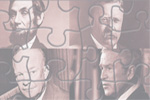 |
All American History Grades 5-8
There are more and more textbook options that integrate other methods, so kids aren't just getting dry facts all the time. All American History offers two years of pre-high school U.S. history from a Christian perspective, emphasizing cultural and everyday-living developments as much as battles and presidents. Kids do hands-on activities, extra research, and textbook and supplemental reading.
|
 |
AOP Lifepacs: History & Geography Grades 1-12
AOP Lifepacs: History & Geography is simply a series of slim workbooks for each grade level. There is no overall flow,with U.S. and world history mixed together, though most of the major points are covered. Students read text and complete the questions; teachers need only grade their written work. This is more of a social studies course, with direction-following, map-reading and geography, history, politics and economics, etc. There is some color in the workbooks, but overall there aren't a lot of illustrations or graphics.
|
 |
BJU Heritage Studies Grades 1-12
One of the most time-proven curriculum options is BJU Heritage Studies, a complete 1-12 history course that is both Christian and objective. You can get by with handing your kids the student text and making them complete the exercises and tests, but this course works best if the parent studies the lessons presented in the teacher editions and presents the material to students along with what they read in the books. This is an excellent foundation (best, we think, for grades 6 and up), and covers both U.S. and world history in-depth.
|
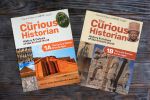 |
CAP Curious Historian & Humanitas Grades 5-10
Still unfinished, Curious Historian is a three-year survey of ancient to medieval history. Humanitas is a two-year survey of early American history. Both are meant to challenge students to question and dig deeper into primary sources.
|
 |
CLP History Grades K-12
The texts from Christian Liberty Press help students think about history as Christians. Though we like all the books individually, they’re not very unified as a curriculum so you'll need to alternate with other curriculum at times. The earliest books introduce the overall flow of history, grades 2-5 focus on America. Grades 6-8 cover middle ages, world and civics. In 9-12, CLP offers their 2-year world history Streams of Civilization. Students learn interpretive methods for analyzing events and figures and are challenged with good questions.
|
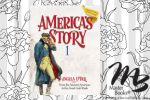 |
Master Books History Grades K-12
Master Books History is less a series than a compilation of courses from different authors. Book sets include "My Story," "American Story," "World's Story," the world and American history courses from James Stobaugh, and miscellaneous others.
|
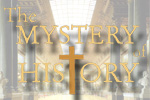 |
Mystery of History Grades 4-9
Mystery of History is a four-volume survey of world history that combines elements of the textbook approach with unit study-style, presenting a Creation to present overview of the significant events from an explicitly Christian perspective. Adaptable for younger and older kids, this is deeper than most elementary and middle school options but it’s not quite enough for high school. Some of the hands-on and timeline activities may seem goofy or unnecessary, but overall this is one of our favorite introductions.
|
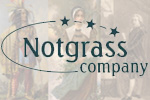 |
Notgrass History Grades 2-12
For elementary to high school students, Notgrass History offers conservative Christian overviews of American and world history and civics. The Notgrass courses recommend kids read some literature, study the Bible, and investigate source documents as they piece together the big picture of the world story. These are friendly and well-designed for home school families. Also available: geography, government & economics.
|
 |
Rod & Staff Social Studies Grades 2-9
Rod & Staff Social Studies covers grades 2-9, focusing on geographic regions and putting more emphasis on community knowledge and geography than on history. Students are taught how communities work, what crops are grown in what parts of the world, and similar topics. Black and white illustrations offer some break from the text; there are in-text questions and tests, to make sure kids are retaining information. These are not our favorite; if you're planning on using this as your primary history text, we strongly suggest supplementing with outside sources.
|
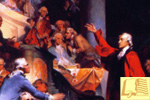 |
To Pledge Allegiance Grades 8-12
To Pledge Allegiance offers high school students a Reformed Christian perspective on the origins of the United States. The three texts are colorful and well-written, and focus on the Christian character of our nation's founders and their ideals. Unfortunately, these are not always available, and the supplemental CD-ROM that provided additional discussion questions and tests is out of print entirely. Covering from America's discovery to the War for Independence, it was meant as the beginning of an eight volume series, never completed. A similar text for the Civil War was published: War Between the States: America's Uncivil War.
|
Unit Studies:
While it's entirely possible (and can be a lot of fun) to build your own unit study from scratch, it's also a lot more work than most parents can afford to put into one subject (or even multiple subjects). The advantage is that you can completely customize content for one student, many students of the same age, or many students of different ages, focusing on topics of interest, incorporating other subjects, etc.
This approach typically works best with younger students. As kids get older, they need more focused study in specific subjects, particularly study that lends itself to contemplation and critical thinking. Younger kids are wiggly and have shorter attention spans, and the hands-on emphasis of most unit studies offers a great way to constructively channel these otherwise negative traits. High school students, on the other hand, are usually content to read books and absorb information and ideas that way.
Because most families are too busy to allow mom (or even mom and dad) to put everything together themselves, there are a number of pre-made unit studies available. Don't think they're easy, though! You'll still have to put in plenty of work, planning lessons, deciding which projects to do and which ones to ignore, finding books and other resources, etc. They can be quite rewarding, but they can also be quite time-consuming.
The thing to remember with unit studies is that they're made to be flexible. If you don't like a book recommended, don't use it, but make sure you find another to replace it. A danger with unit studies is to figure your kids are getting everything they need in the hands-on portions just because they like those the most, but they still need specifically academic instruction.
 |
Diana Waring Presents Grades 5-12
More specifically history-oriented than most unit studies, and also geared to older students, Diana Waring's History Alive! program engages students at every level—kinesthetic, auditory, and visual—through CD lessons, worktexts, activities, and supplemental reading lists. These don't integrate multiple subjects in the same way, but for history Diana Waring is a great way to get both a Christian-themed overview and some of the juicy lesser-known bits.
|
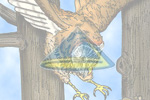 |
KONOS Unit Studies Grades K-8
The grand-daddy of home school unit studies is the KONOS program from Carole Thaxton and Jessica Hulcy. Aimed at K-8 graders (with an expansion for high school students that's more literature-based and less hands-on), the course emphasizes Christian character, having students work through units in which all assignments and projects relate to a trait or virtue.
|
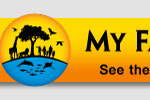 |
My Father's World Grades K-12
Well-known as a full curriculum company, MFW’s core is its history study, which blends literature, biography, art, music, science, and more into a cohesive study, but its primary feature is its strong biblical focus, with lots of Scripture reading and memorization. Lesson plans are doable, requiring less literature and fewer hands-on activities than others, but it does provide plenty of supplemental ideas. This doesn’t completely qualify as a unit study and draws from all sorts of educational philosophies.
|
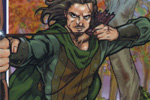 |
Story of the World Grades 1-6
For younger students, Story of the World provides a good overview. The books read like historical fiction (there is some of that mixed in), and the activity books offer coloring pages and fun projects. These have some Christian elements, but for the most part they aren't specifically Christian, though Christ's resurrection is treated as fact. This is almost a unit study approach, though it doesn't look beyond the books themselves much.
|
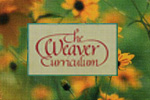 |
Weaver Curriculum Grades K-12
The Weaver Curriculum by Rebecca Avery builds lessons around specific Bible passages, and by the end of the course (designed for K-6 grade with add-ons for high school) kids will have made their way through the Old Testament and the New Testament Gospels. This is more Scripture-oriented than KONOS, but not as hands-on and with fewer ideas for activities and exercises.
|
Literature Approach:
The fairly recent Classical education revival has led more and more parents to implement a literature-based approach. Like the unit study, this is a very customizable method, using "living books" that give a feel for a given time period as well as offering information. A literature-based history curriculum draws on biographies, memoirs, primary source documents, historical novels, classic literature, and more to impart a sense of times past.
 |
Beautiful Feet Books Grades K-12
With Beautiful Feet Books, kids read books and engage with them through discussion with parents. The reading lists and plans are very easy to navigate, so you don't have wonder what book your kids are supposed to read or do much puzzling over assignments. Similar in concept toVeritas Press History, though less involved and more U.S. history-oriented. These courses have evolved quite a bit in the last few years, with the publisher adding numerous new guides and greatly expanding old ones.
|
 |
Sonlight Curriculum Grades PreK-12
“Literature-Rich” is how the Sonlight publishers describe their curriculum, and it does use a LOT of books. You choose your plan up-front, and their teacher manuals provide a very structured plan to follow, suggesting just how much reading (both read-aloud and by students) from each book for each day along with guides for teaching. Their reading lists are planned around a theme for each year, and while we like most of the books they recommend, we don’t always agree with when they should be used. This can be pretty overwhelming if you’re trying to do several ages at once.
|
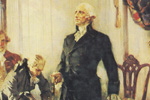 |
Tapestry of Grace Grades 1-12
Like Story of the World and Mystery of History, ToG offers a four year plan for history. It is meant to be used by a family with students at multiple levels, so that you could correlate a 3rd, 6th, and 10th grader (for example) in one period of history. Incorporating history, literature, geography, philosophy, and more, this uses a huge and diverse booklist, but is very flexible. However, it will just take a lot of time and organization to pull everything together.
|
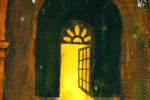 |
TruthQuest History Grades K-12
TruthQuest History provides reading lists (quite extensive, and covering all grades), but with books that offer Christian commentary on important events and figures, as well as providing discussion topics. Author Michelle Miller provides paired books and insights that address the two main questions of existence (Who is God? and, Who is man?). One set of books covers U.S. history for younger grades, while another set covers world history for older students, and a third covers world history for mid-range grades.
|
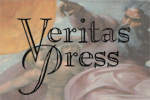 |
Veritas Press History Grades 2-8
One of the best literature-based programs we've seen is Veritas Press History for elementary students, and its middle and high school follow-up,Omnibus. Both use central texts to pull together a wide range of outside sources, though Omnibus assumes a fair amount of history knowledge, while Veritas Press History requires and assumes none. The elementary course involves beautiful cards, hands-on activities, and sing-along songs to help kids remember key information. Make sure to look into Omnibus as well!
|
Spines & Overviews
Because most literature-based and unit study programs aren't as strong on overview, we suggest using a "spine" book to pull everything together. Some courses provide their own, or at least a guide to help set each book in its context, and these are extremely helpful. It's important that teachers are involved with their students in this type of setting: discussions are at the core of learning from books that aren't fact-based, and you'll need to direct those yourself, which means you'll also need to have read whatever your kids are reading.
Because there are several in a collection, we can review and shelve the following spine books as a series. These can easily make up your curriculum core, but don’t include all the supplemental materials (like comprehension questions and answers) you need to keep your life simple.
| U. S. History Spines |
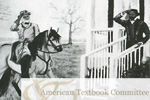 |
Basic History of the United States Grades 9-12
Clarence Carson's set of six books presents a narrative history of the U.S. from a politically conservative perspective. It’s one of the more solid overviews we offer, but it is not explicitly Christian and is not super friendly for students. The teacher’s guide includes study questions for all the books. Also available: government & economics.
|
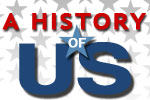 |
History of Us Grades 4-12
Joy Hakim's History of US is a secular series which can be used in late elementary to early high school. It offers a wealth of illustrations and highly readable text that covers the earliest Native Americans all the way to the current era. Evolution is assumed to be fact, and there are several politically correct passages we dislike, but overall this is an even-handed course. Study materials exist, but are not easy to obtain.
|
 |
Light and the Glory Grades K-12
This isn’t a literature-based program exactly, but presents more or less a narrative history of the U.S. first from a Christian perspective. We disagree with this series’ take on some of America’s founders and how it approaches some of the Civil War issues, but it has its high points; we encourage plenty of discussion if you use it.
|
| World History Spines |
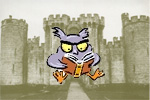 |
Early Times Grades 5-10
Suzanne Strauss Art's Early Times books (best for middle and high school) are highly enjoyable for students to read and can easily be used as central history texts. Students learn about political trends, cultural developments, wars, and all the rest in a narrative form that keeps kids engaged and learning. Questions at the end of each section provide opportunity for discussion, while hands-on activities offer a more real-world element. No teacher support is available.
|
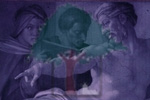 |
Greenleaf Press History Grades 2-9
Among the most interesting spines we carry are the Memoria Press Classical Studies and Greenleaf Press History. Both courses are based on the Famous Men series by John H. Haaren and A.B. Polland which give short biographies of major men of important periods. While Memoria has developed their own activity books with answers and flashcards, Greenleaf’s Guides pair the Famous Men books with others and offer study questions. Memoria has a slightly Catholic bias, while Greenleaf is decidedly Protestant.
|
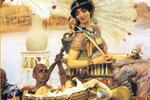 |
H. A. Guerber Histories Grades 3-8
Unfortunately no longer available to bookstores, The H.A. Guerber Histories are similar to Suzanne Art's series, but the Guerber books are better suited to younger readers. There are no questions or hands-on activities, but the books are more story-oriented, and kids will get the impression they're reading a good novel even while they're getting a solid foundation in world and U.S. history. These are actually slightly edited versions of older texts, revamped to make reading easier on modern-day kids (the ones by Guerber and Miller are expanded, but other than that, archaic language is simply toned down).
|
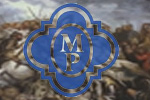 |
Memoria Press Classical Studies Grades 2-12
Memoria Press has a lot of similarities to Greenleaf as both use the Famous Men books. But Memoria has materials for before, specifically their Timeline Program and their Introduction to Classical Studies. And for high school students, they’ve reprinted the 1920s history books by Dorothy Mills, which they use along with literature like Virgil’s Aeneid, Dante’s Divine Comedy and Augustine’s City of God.
|
History Analysis
All this history study won't be of much benefit without the tools to analyze what one has learned. In an effort to provide those tools, John De Gree has developed and now offers The Classical Historian: Take a Stand!, a video and worktext course designed to get students of any age (who have some basic history knowledge and reasonable composition skills) thinking about the issues of the past and how they affect the present. De Gree takes the Socratic approach, guiding kids toward truth rather than "administering" it to them via lectures.
Marcia Brim's excellent Tools for Young Historians is exactly what it sounds like: a toolkit for elementary and middle school students to know how to study history, covering things many other courses don't, like how the B.C. time scheme works, or the four major worldview divisions (polytheism, monotheism, naturalism, pantheism), or the general timeline of world history. This would be a great place to start before moving into Take a Stand!, though you'll probably want to complete a survey course in between.
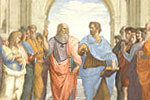 |
Tools for Young Historians Grades 3-9
Marcia Brim's excellent Tools for Young Historians is exactly what it sounds like: a toolkit for elementary and middle school students to know how to study history, covering things many other courses don't, like how the B.C. time scheme works, or the four major worldview divisions (polytheism, monotheism, naturalism, pantheism), or the general timeline of world history.
|
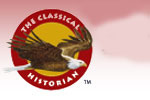 |
Classical Historian: Take a Stand Grades 3-12
In an effort to provide the tools of proper history study, John De Gree has developed The Classical Historian: Take a Stand!, a video and worktext course designed to get students of any age (who have some basic history knowledge and reasonable composition skills) thinking about the issues of the past and how they affect the present. De Gree takes the Socratic approach, guiding kids toward truth rather than "administering" it to them via lectures.
|
Supplements
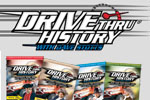 |
Drive Through History with Dave Stotts Grades 6-12. (NOW STREAMING)
Dave Stott's Drive Thru History makes an excellent supplement to any course. A DVD series that takes kids to the places where history transpired, this is Christian in perspective, general in approach, and yet detailed enough to give watchers a real sense of the historical context. Fun and immensely educational, this is a great alternative to Friday night movies.
|
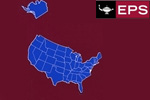 |
Story of the U.S.A Grades 4-8
The workbook series Story of the U.S.A. from EPS simply consists of slim read-and-do-the-exercises worktexts for older students. They're fairly unbiased and tie major events together, but they're not thorough enough to be a complete program. Consider using these remedially, or as the basis for more in-depth research and study.
|
 |
Story of Western Civilization Grades 4-8 (OUT OF PRINT)
The workbook series Story of Western Civilization from EPS simply consists of slim read-and-do-the-exercises worktexts for older students. They're fairly unbiased and tie major events together, but they're not thorough enough to be a complete program. Consider using these remedially, or as the basis for more in-depth research and study.
|
Conclusion
So where should you start? How are your kids going to get basic history knowledge? While overviews aren't the end-all of history education, they are a great place to begin. Students will get a decent sense of the flow of events, and from there you can begin to develop a fuller picture, either based on their interests or deficiencies. History is a great subject for teaching research skills, and having your children write reports and biographies on past events and people is an excellent way to broaden their knowledge while honing their abilities in the library or online.
Because it's the story of both godly men and women, and those who fought God's Law and plan, history study is also an excellent venue for teaching character traits and good behavior. If you want your kids to emulate godly saints and to shun wickedness, have them read as many biographies as they can about people like Hudson Taylor and George Herbert on the one hand, and Josef Stalin and Pol Pot on the other. Whatever you do, make it enjoyable, and never let yourself or your kids adopt a dismissive or negative view of the story of God's world.
 |
Review by C. Hollis Crossman
C. Hollis Crossman used to be a child. Now he is a husband and father, teaches adult Sunday school in his Presbyterian congregation, and likes weird stuff. He might be a mythical creature, but he's definitely not a centaur. Read more of his reviews here.
|
Did you find this review helpful?